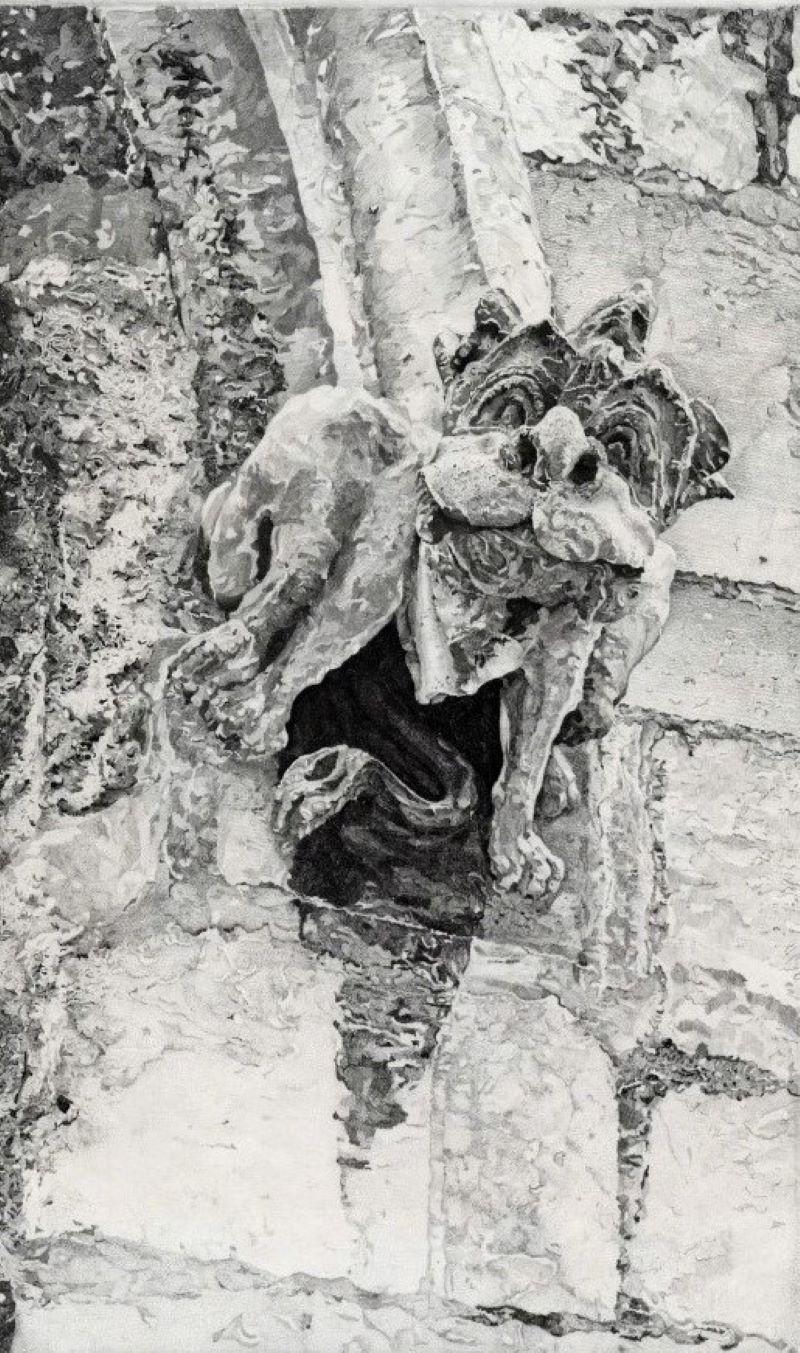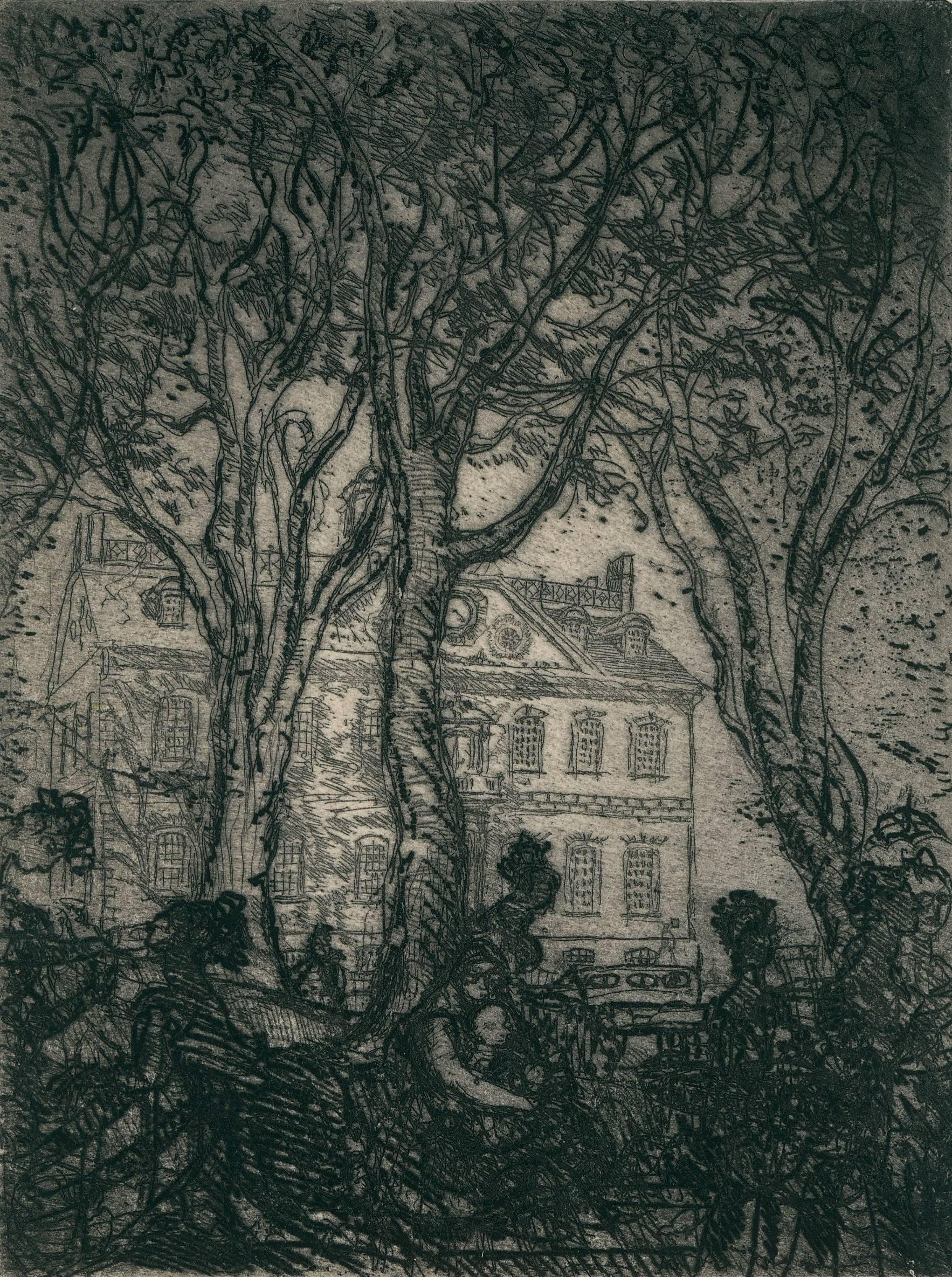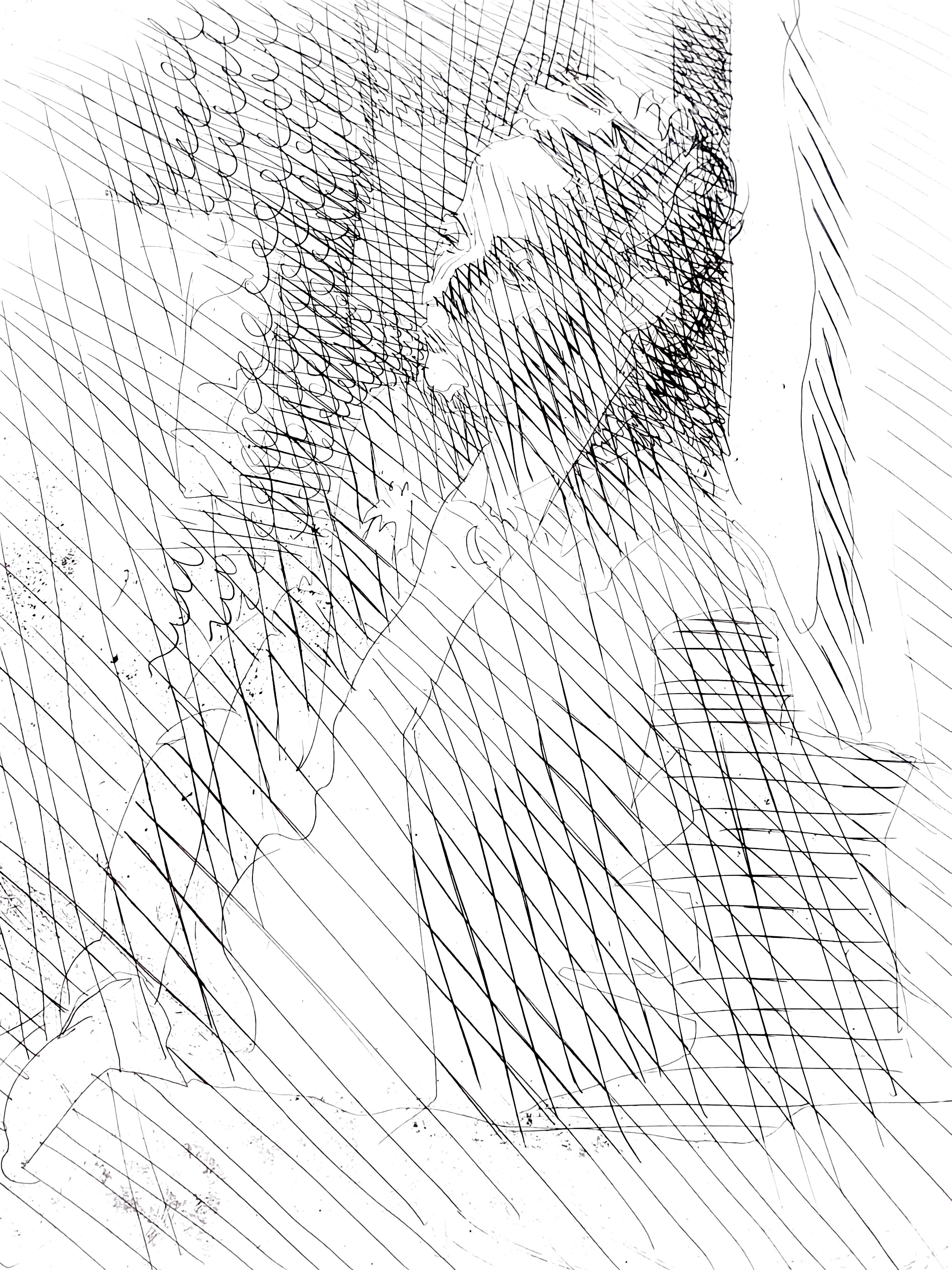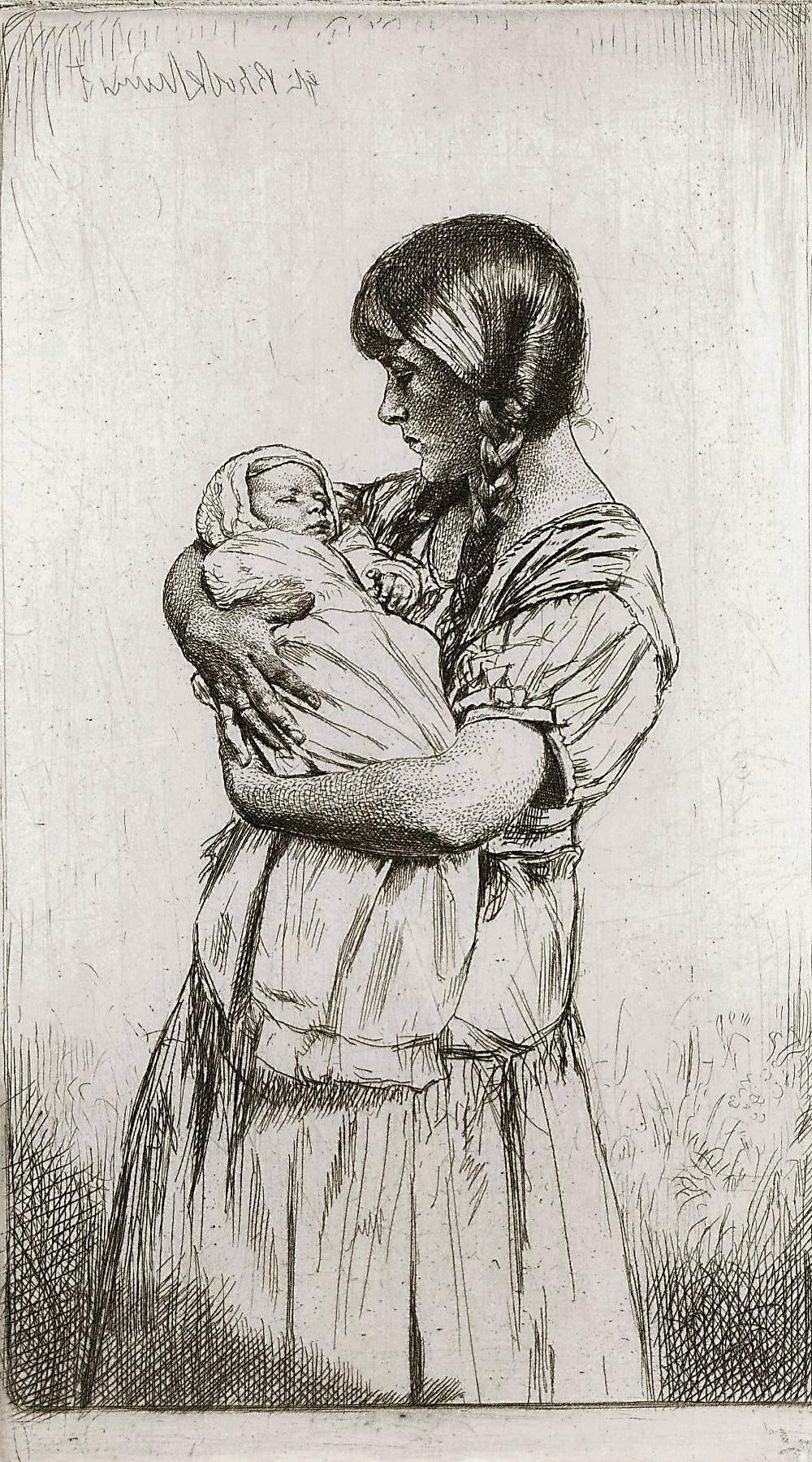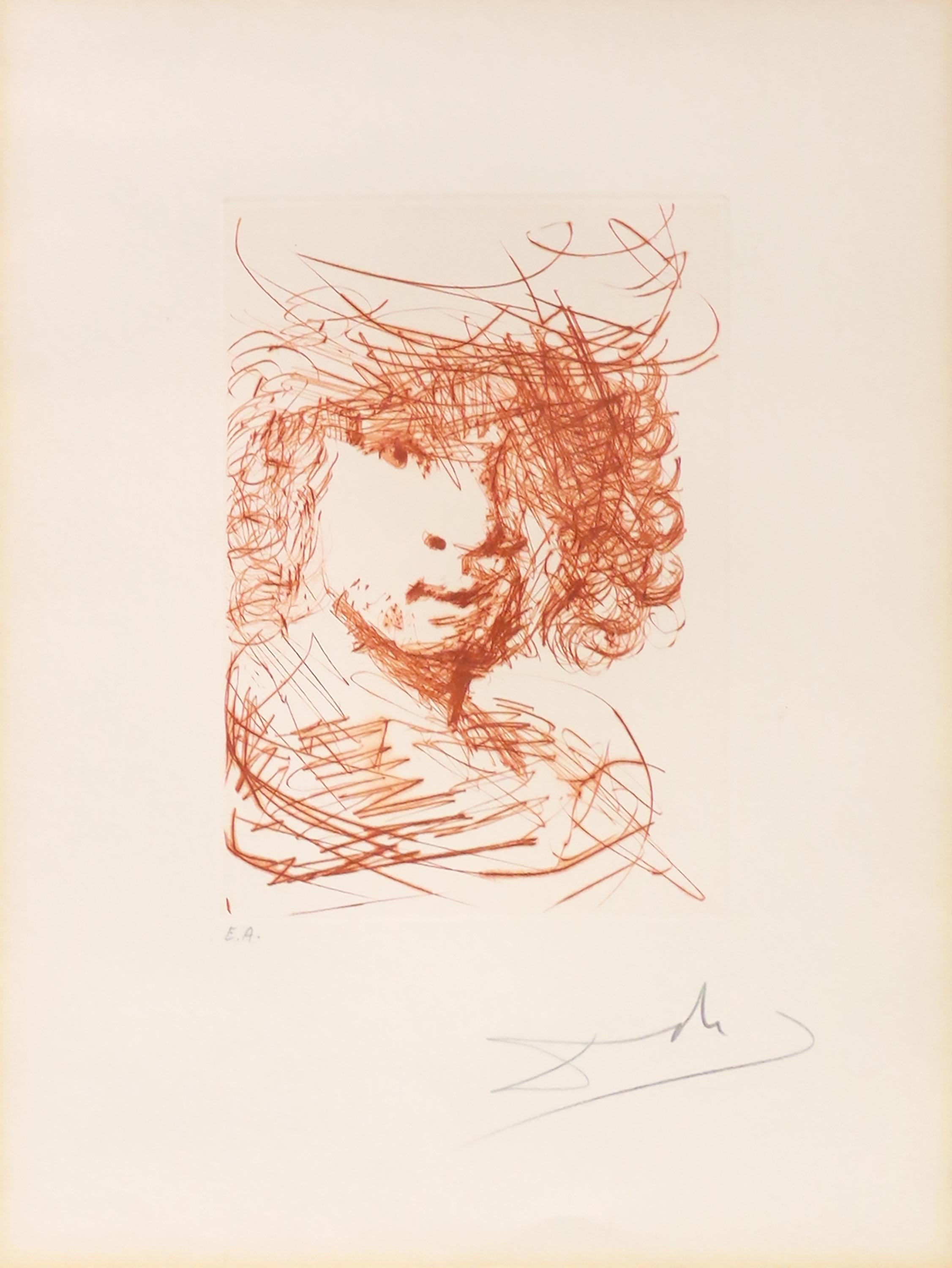Items Similar to Ex Libris et Musicis Mantero - Original Etching by M. Fingesten - Early 1900
Want more images or videos?
Request additional images or videos from the seller
1 of 2
Michel FingestenEx Libris et Musicis Mantero - Original Etching by M. Fingesten - Early 1900Early 1900
Early 1900
About the Item
Image dimensions: 15x11 cm
Original Ex Libris includes passpartout. Edition of 100 prints (47/100).
Hand signed. Very good conditions.
Michel Fingesten
Michel Finkelstein, known as Fingesten, was born in 1884 in Buzkovice u Ostravy; he was a painter and engraver, who was famous particularly for his extraordinary production of Ex Libris (bookplates).
After studying at the Academy of Fine Arts in Vienna, and in Monaco with Franz von Stuck, who addressed him to the caricature and to the graphics of small size, Fingesten left Austria; he travelled all over the world, visiting Europe, the United States of America and the Oriental countries.
Fingesten’s stay in Berlin since 1913 was decisive for his contact with the world of the engraving. After his adhesion to the New Secession, Fingesten destroyed his previous pictorial production and he decided to dedicate himself to the dimension of the engraving; even if he preferred the graphics, he continued to see himself as a “painter”.
The German city was characterized by a very dynamic artistic atmosphere that stimulated Fingesten. The engravings of this artist were published since 1915 in files and books in limited edition.
Fingesten’s works were published also in the famous periodicals of the expressionist avant-garde, like “Genius” and “Marsyas”, with the artists and the writers most important of his age.
Considered as a genius of the Ex Libris, that became with him a big art of small size, Fingesten realised more over than 1.500 of these brands of property since 1915. Fingesten’s Ex Libris were nourishment for the bibliophiles, who glued the bookplates on the first page of theirs books to indicate the property and who traded these Ex Libris.
The Ex Libris is a genre that doesn’t have confines and that can’t be reduced to indicate the name of the owner on the book, on which it is glued.
It left his old function of simple heraldic sign of property, and it became almost the projection of the bibliophile’s personality.
Even if he didn’t fall in the eclecticism, Michel Fingesten used generously the medium of the quote, in the subject, in the form and in the style.
In the 20s, for example, his art oscillates between Otto Dix and George Grosz, of which he overcomes the social critique and the erotism, and Karl Arnold of which he beats the irony.
The Great Depression of 1929 and the rapid advance of the Nazism contributed in a significant way to the progressive isolation of the Czech painter and engraver.
In the spring of the 1935, Fingesten left Germany and went to Italy, where he settled in Trieste and Milan.
The collector Mantero remembers about Fingesten’s Italian stay that “he lived in a home without furnitures” in Via Chiaravalle 11.
Mantero, who was one of the most important Fingesten’s customers of Ex Libris, wrote: “I understood he had a difficult and poor life for absence of money, but he didn’t have ambition of a rich life, indeed he told me that the earnings to buy some bread and a glass of wine were enough for him”.
In that period, the main means of subsistence were the commissions of the collectors of Ex Libris, especially the collectors of Milan and Como, members of the circle of friends of the art merchant Luigi Filippo Bolaffio.
Also known as “Picasso of the Ex Libris”, Fingesten explored this artistic medium and he elevated it with new and powerful expressive resources.
When the Ex Libris was detached from its practical function, the Artist began to create Ex Libris also for fake customers, for “famous contemporary people”, poets, musicians, and since 1928, for political men.
The Ex Libris, realised with a lot of graphic techniques, like the etching, the drypoint and the lithography, has always (with the graphics of occasion) the signature of the Artist, that underlines the awareness of his valour.
An important chapter of the production of this Artist was dedicated to the erotic Ex Libris, that for their irony were understood with difficulty by people that didn’t belong to the circle of the Artist.
Some of the most secret and rare erotic works by Fingesten are linked to the commissions of Gianni Mantero.
The dominant element of these engravings is the sarcasm, that is sometimes connected to a gloomy irony, and to the presence of the death, that coincided with the war, particularly in the last years of the Artist existence.
In his compositions, Fingesten was a narrator of life and death, of sex and love, of nightmares, hopes, art and poetry. His narration wasn’t without the time and the space, but it was at the center of the contemporary dimension, in the 20s and 30s of the anguished Europe that was going to the ruin.
We can underline that the relationship between the Artist and the customer had an important role in the definition of the power of these graphic works; actually the creative energy, that was born from the contact between the Artist inspiration and the customer personality, generates a strong expressive freedom.
After his death, Michel Fingesten and his works were forgotten; today there is a new attention to this very important artist and to his visionary sign.
Bibliography
• N. Nechwatal, Michel Fingesten – Das graphische Werk, Coburg 1984
• A. Tomasetig, Michel Fingesten: dalla collezione Cauti una mostra di ex libris e grafica d’occasione, 2005
• A. Parik, The unknown Michel Fingesten, Praha 2008
This artwork is shipped from Italy. Under existing legislation, any artwork in Italy created over 70 years ago by an artist who has died requires a licence for export regardless of the work’s market price. The shipping may require additional handling days to require the licence according to the final destination of the artwork.
- Creator:Michel Fingesten (1884 - 1943, Italian)
- Creation Year:Early 1900
- Dimensions:Height: 11.82 in (30 cm)Width: 9.45 in (24 cm)Depth: 0.12 in (3 mm)
- Medium:
- Movement & Style:
- Period:
- Condition:Insurance may be requested by customers as additional service, contact us for more information.
- Gallery Location:Roma, IT
- Reference Number:
About the Seller
4.9
Platinum Seller
These expertly vetted sellers are 1stDibs' most experienced sellers and are rated highest by our customers.
1stDibs seller since 2017
6,693 sales on 1stDibs
Typical response time: 2 hours
- ShippingRetrieving quote...Ships From: Rome, Italy
- Return PolicyA return for this item may be initiated within 14 days of delivery.
More From This SellerView All
- Death and the Lumberjack - Original Etching by Alphonse Legros - 1876By Alphonse LegrosLocated in Roma, ITDeath and the Lumberjack is an original artwork realized by Alphonse Legros (1837-1911) in 1876. The original work is contained in a cream colored cardboard passepartout (50x35 cm)....Category
1990s Modern Figurative Prints
MaterialsEtching
- Garden - Original Etching by Gustave Pierre - Early 20th CenturyLocated in Roma, ITGarden is an Original Etching realized by Gustave Pierre in the Early 20th Century. Signed on the plate. Gustave René Pierre, born in Verdun on March 7, ...Category
Early 20th Century Modern Figurative Prints
MaterialsEtching
- Women at the Fountain - Etching by Luigi Bartolini - 1950By Luigi BartoliniLocated in Roma, ITWomen at the Fountain is an original artwork realized by the Italian artist Luigi Bartolini (1892-1963) in 1950. Black and white Etching. Hand-signed, titled and numbered ( 17/50 )...Category
1950s Modern Figurative Prints
MaterialsEtching
- Nude Woman - Original Etching By Bertrand PY - 20th CenturyLocated in Roma, ITNude Woman is an original etching realized by Bertrand PY (1895-1973) during the 20th century. The original work is contained in a cream colored cardboard...Category
Early 20th Century Modern Figurative Prints
MaterialsEtching
- House of Dolls - Original Etching by Jacques Maret - 1929Located in Roma, ITHouse of Dolls is an Original Etching realized by Jacques Maret in 1929. The artwork is in good condition on a cream colored paper, included a white cardboard passpartout (34x49 cm)...Category
1920s Modern Figurative Prints
MaterialsEtching
- Noses - The Physiognomy - Original Etching by Thomas Holloway - 1810By Thomas HollowayLocated in Roma, ITThomas Holloway, Noses, original Etching, 1810. The Physiognomy - The Noses is an original etching artwork realized by Thomas Holloway for Johann Caspar Lavater's "Essays on Physiogn...Category
1810s Modern Figurative Prints
MaterialsEtching
You May Also Like
- The Gothic SpiritBy John Taylor ArmsLocated in Storrs, CTThe Gothic Spirit (also called A Gargoyle, A Gothic Spirit). 1922. Etching and stipple. Fletcher 120. 11 5/8 x 7 (sheet 15 1/4 x 11 1/4). Gargoyle Series #8. Edition 130. Illustrated...Category
1920s American Modern Landscape Prints
MaterialsDrypoint, Etching
- Old Colony Statehouse, Newport, Rhode IslandBy Clifford Isaac AddamsLocated in Storrs, CTOld Colony Statehouse, Newport, Rhode Island. c. 1931-1933. Etching. Hausberg 187. iii. 7 7/8 x 6 (sheet 12 1/2 x 9 1/4). Printed on the full sheet of cream wove paper with deckle ed...Category
Early 20th Century American Modern Landscape Prints
MaterialsEtching
- Jacques Villon - Woman - Original EtchingBy Jacques VillonLocated in Collonge Bellerive, Geneve, CHJacques Villon - Woman - Original Etching Circa 1949 Signed in pencil and numbered Dimensions : 34.8 x 25 cmCategory
1940s Modern Portrait Prints
MaterialsEtching
- The Two MélisandesBy Gerald Leslie BrockhurstLocated in Storrs, CTThe Two Mélisandes. 1928. Etching. Fletcher 60. 5 3/4 x 3 1/2 (sheet 10 1/2 x 7 1/2). Edition size not stated. Illustrated: Fine Prints of the Year, 1928; Salaman, Modern Masters of ...Category
Early 20th Century Modern Portrait Prints
MaterialsEtching
- RembrandtBy Salvador DalíLocated in Missouri, MORembrandt Salvador Dali (Spanish, 1904-1989) Signed Lower Right "E.A." (Artist Edition) Lower Left 12 x 10 inches 23.25 x 19.25 inches with frame Salvador Dali was born in May 11, 1...Category
20th Century Modern Portrait Prints
MaterialsEtching
- Homme dévoilant une Femme. (Man uncovering a woman).By Pablo PicassoLocated in Storrs, CTHomme dévoilant une Femme. (Man uncovering a woman). 1931. Drypoint. Bloch 138; Baer 203 B.d. Vollard Suite, plate 5. Printed by: Lacourie...Category
Mid-20th Century Modern Portrait Prints
MaterialsEtching
Recently Viewed
View AllMore Ways To Browse
American Depression Glass
Mens Gianni
Beats Antique
Fine Karl Springer
Dior Wine Glasses
Antique German Wine Glasses
Picasso Erotic Art
Antique Sex
Picasso Drypoint
Lot Of Antique Books
Antique Resources
Men Erotic
Czech Glass Wine Glasses
Erotic Men
Luigi M
Antique Italian Wine Glasses
Antique Bookplate
Antique Bookplates
